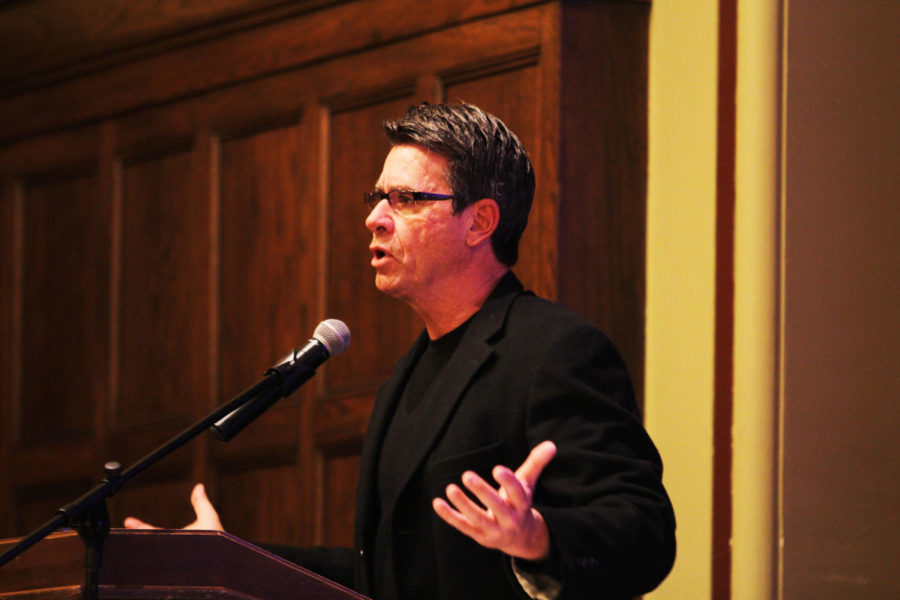Freedom of art celebrated at Iowa State
April 11, 2013
Nowhere in the First Amendment does it say anything about the freedom of art, but does that mean that artists don’t have the same Freedom of Speech rights as everyone else?
On Wednesday, April 10, 2013, in the Great Hall of Memorial Union, Brian Duffy and Heidi Wastweet spoke to a crowd of about 60 people about their unique forms of Freedom of Speech, and their struggles with the First Amendment.
Heidi Wastweet is a medal sculptor, and her specialty is in bas-relief bronzes. She sits on the Citizens Coinage Advisory Committee, which works with the treasury on the designs of all coins in the United States.
Wastweet spoke mostly of how she uses coins and sculptures as a medium of Freedom of Speech. In ancient times, they used the faces of their leaders on their currency, just as is common today. Heidi noted that back before there was television, radio or newspaper, people relied on the changing of the faces on the coins to know when a political leader has died or been taken over.
Heidi also uses the medals she sculpts to depict Freedom of Speech. Though the images she is sculpting for others may not always convey her religious, political or educational beliefs, she will always use the skills she has to protect the Freedom of Speech for others.
“Use whatever medium you have to exercise these rights that have been given to you. Don’t take them for granted; use them however you want,” Wastweet said.
Brian Duffy is an editorial cartoonist whose work has been published in the Des Moines Register for the last 25 years.
Duffy spoke of how editorial cartooning is a lost art that nobody really wants to get into anymore, but nevertheless is still a great example of Freedom of Speech.
Duffy said that many people don’t get their news from a newspaper anymore, and the majority of the news is viewed online, which is why editorial cartoons are going extinct.
Cartoons also involve a lot more words and exaggeration than they used to, and that’s not what people are interested in.
“It’s a tough road in the future for the First Amendment, and not so much by judicial things, but by just what’s happening naturally,” Duffy said.
Geoffrey Moore, junior in agronomy, said he attended the lecture for his English class to evaluate the speakers and the gestures they were using.
“I thought they were good,” Moore said. “They had some interesting facts, and I learned a few things.”
The lecture was put on in honor of First Amendment Day at Iowa State by the Greenlee School of Journalism and Communication, Iowa State Daily, Lee Enterprises, First Amendment Day Planning Committee, the ISU chapter of the Society of Professional Journalists and Committee on Lectures.







